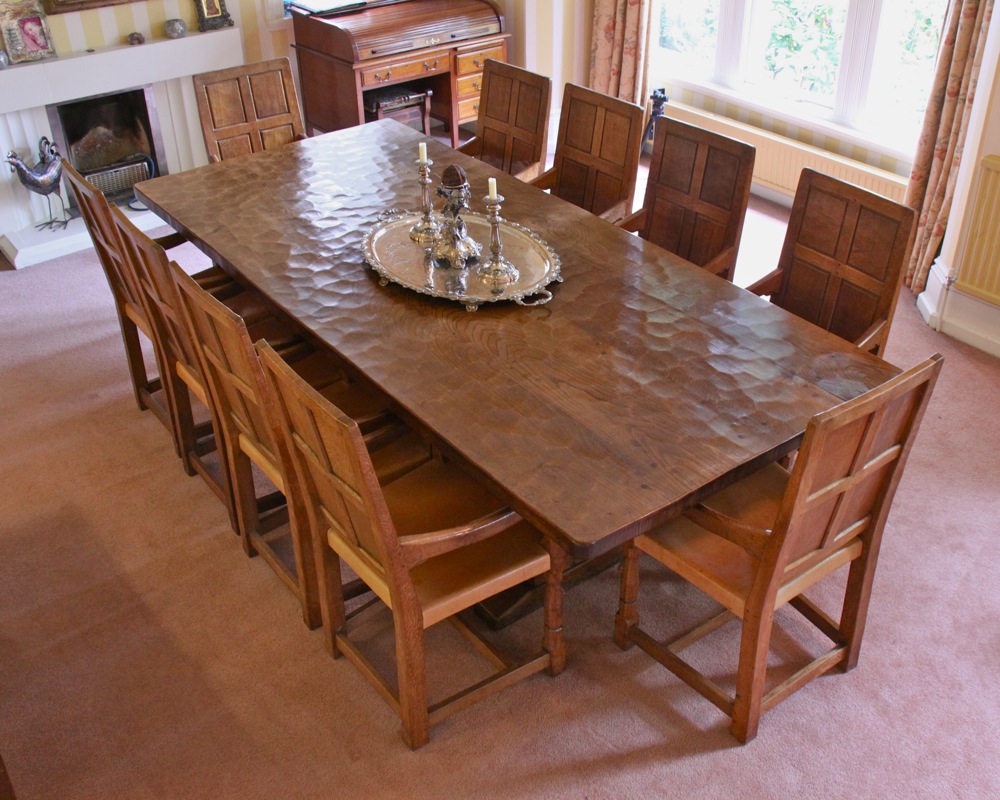Richard's pic above gives the general idea, but I suspect adze handles have always been very personalised, each user having their own optimal length & curve. Adzing takes a lot of practice, but once mastered, can produce a beautiful texture. Also good for rapid stock removal and sometimes, I've found, more efficacious than any powered alternative.
I agree with the point about Robt. Thomson's tables being a bit overdone and have almost certainly been sanded after adzing (slightly defeating the point of adzing??). The workmen of old would never have accepted such a finish for a table top; likely adzing to true the thing up, then using planes to produce a flat and smooth surface - still with the beautiful texture which hand-tooling imparts, but much more subtle.
That said, Mouseman is a very successful business and adzing is one of their main motifs - so it clearly strikes a chord with customers. Their adzed work - even if a little overstated, is far more pleasing than the nasty and impersonal products of Ikea, et al.
I would certainly recommend learning to adze - but be sure to wear safety boots. Favoured wear amongst the old Bucks. chair makers were clogs and stout leather gaiters, but even then apparently, not all retired with a full set of toes!
I agree with the point about Robt. Thomson's tables being a bit overdone and have almost certainly been sanded after adzing (slightly defeating the point of adzing??). The workmen of old would never have accepted such a finish for a table top; likely adzing to true the thing up, then using planes to produce a flat and smooth surface - still with the beautiful texture which hand-tooling imparts, but much more subtle.
That said, Mouseman is a very successful business and adzing is one of their main motifs - so it clearly strikes a chord with customers. Their adzed work - even if a little overstated, is far more pleasing than the nasty and impersonal products of Ikea, et al.
I would certainly recommend learning to adze - but be sure to wear safety boots. Favoured wear amongst the old Bucks. chair makers were clogs and stout leather gaiters, but even then apparently, not all retired with a full set of toes!







